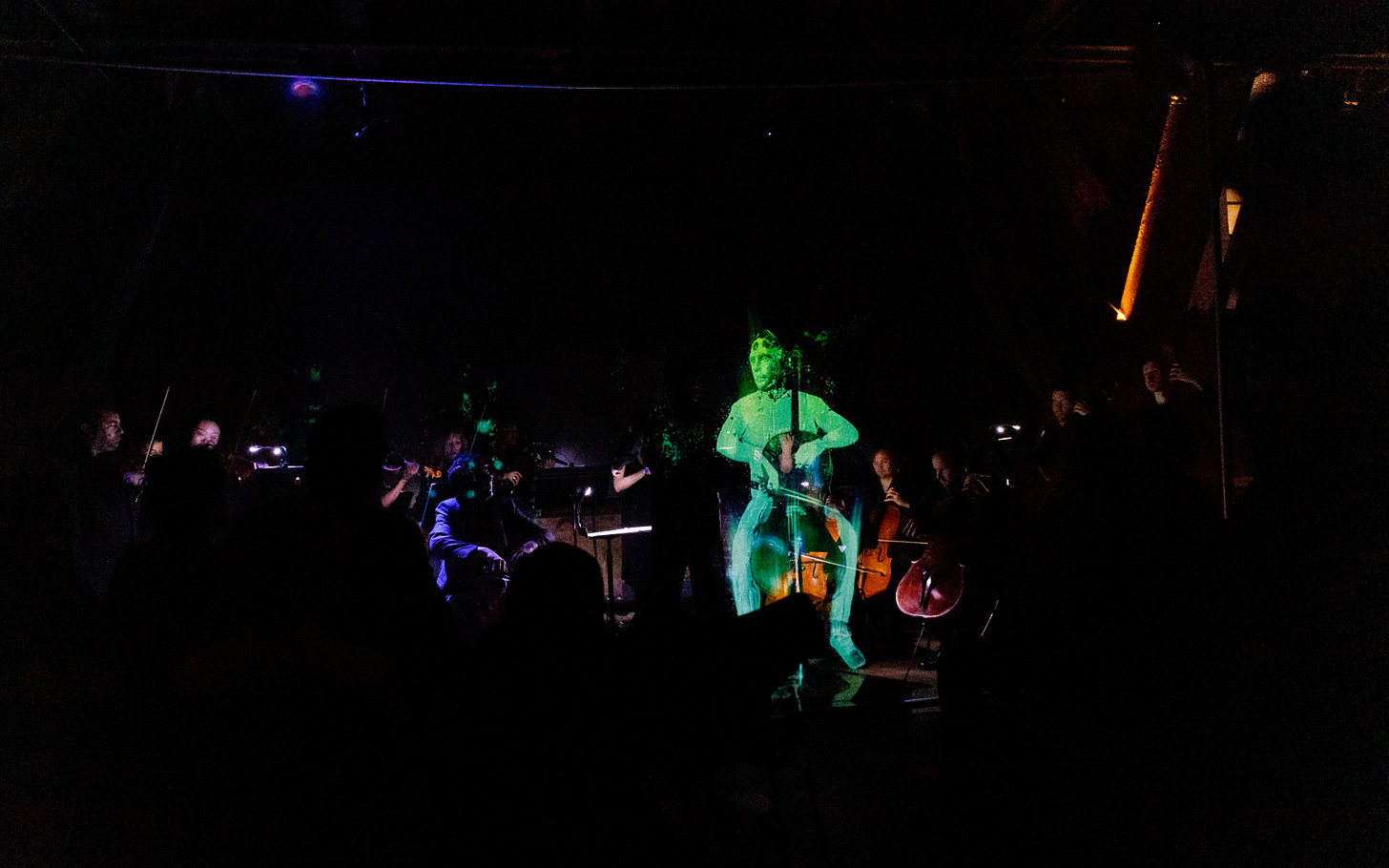A Game of Cello-Phone
“Stay on the line for the next available cellist,” read the program notes to Press “1” for Cello. What followed was a lot more exciting than hold music.
The concert, curated and performed by cellist Yves Dhar, opened the four-day MATA Festival on Wednesday, May 15. Founded in 1996 — by Philip Glass, among others — the 26th annual MATA, held this year at Fotografiska, explored the intersection of music and technology.
Opening the program was Cristina Spinei’s “Missed Deadline,” so-named because the composer turned it in a few days late. Coincidentally, I interviewed Spinei back in 2021 about her use of NFTs, which she felt could “revolutionize” how musicians make their income.
There was no crypto associated with “Missed Deadline.” It had, instead, an étude-like groove, reminiscent of Glass’s Songs and Poems for Solo Cello, and Mike Block-esque “chopping.” The truncated piece — only a few minutes long — left me wanting more.
More ambitious was Adonis Gonzales-Matos’ “Nrtya” — its title meaning “dance” in Hindi. For this “tongue twister” of a piece, the Cuban composer experimented with Indian rhythms.
With tambourines on his toes, Dhar showed impressive coordination, not to mention multi-tasking, though his heavy-footed effort was clearly audible. Most effective was when Dhar played a trill along with shoe-shaking punctuation.
Nathan Schram’s “Plant Church” was less cerebral. For this piece, Schram — the violinist of the Attacca Quartet — was inspired by doing magic mushrooms.
And, like the one and only time I did shrooms, “Plant Church” — with its strobe lights and throbbing beat — gave me anxiety. The trippy visualizations — by Mauricio Ceppa, a.k.a. Funktaxi 1533 — felt aesthetically dated.
A red CGI humanoid that reminded me of that Black Eyed Peas album. The black-and-white outline of a cellist, mirrored like a Rorschach test. A fisheye shot of attractive people at a party. The last movement — with intensely beautiful cello swells — was like a psilocybin come-down.
But the focal point was the NY premiere of Adam Schoenberg’s “Automation.” Up until then, Dvar had played behind a (slightly distracting) see-through screen, which turned out to be for holographic projection.
Schoenberg’s double cello concerto was written for Dhar as well as A.G.N.E.S. (Automatic Generation Network for Excellent Songs), an AI holograph cellist. “Automation” was a human-versus-machine duel, in which A.G.N.E.S, who had been fed Schoenberg’s oeuvre, spat out “oddly cold” melodies, learning with each iteration.
The holograph — who looked like Dhar as a robot — sat bolt upright, bowing un-synched to the glitchy sound. Dhar’s playing, in contrast, was über romantic, as legato as possible. Almost achingly lyrical.
While the Experiential Orchestra, conducted by James Blachly, admirably interpreted Schoenberg’s score — which sounded nothing like the other Schoenberg — I wanted to be challenged more. It verged on gimmick.
Most experimental was an interlude for “Halldorophone,” an electrified, cello-like instrument. With feedback dials, in place of a bow, it sounded like whale song.
The final movement felt unfinished. As part of the narrative arc, I had expected the A.G.N.E.S. to return, but she never did. The holograph did, however, take a stiff bow at curtain call.




